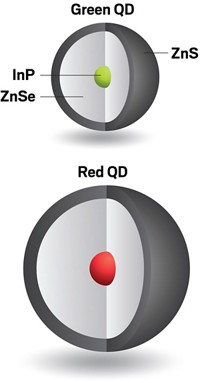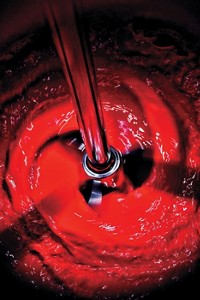Advertisement
Grab your lab coat. Let's get started
Welcome!
Welcome!
Create an account below to get 6 C&EN articles per month, receive newsletters and more - all free.
It seems this is your first time logging in online. Please enter the following information to continue.
As an ACS member you automatically get access to this site. All we need is few more details to create your reading experience.
Not you? Sign in with a different account.
Not you? Sign in with a different account.
ERROR 1
ERROR 1
ERROR 2
ERROR 2
ERROR 2
ERROR 2
ERROR 2
Password and Confirm password must match.
If you have an ACS member number, please enter it here so we can link this account to your membership. (optional)
ERROR 2
ACS values your privacy. By submitting your information, you are gaining access to C&EN and subscribing to our weekly newsletter. We use the information you provide to make your reading experience better, and we will never sell your data to third party members.
Environment
Greener Reaction Conditions Award
by Stephen K. Ritter
October 16, 2014
| A version of this story appeared in
Volume 92, Issue 42
QD Vision, Lexington, Mass., for developing quantum dots for high-quality color and energy-efficient displays and lighting
QD Vision was recognized for finding environmentally friendlier ways of manufacturing quantum dots used in commercial display and lighting products. Quantum dots are semiconducting nanoparticles, such as cadmium selenide or indium phosphide, that emit light after being excited electronically. The color of light depends on the size of the particles, with larger particles emitting red, medium-sized particles emitting green, and the smallest particles emitting blue. The different size alters the band gap of the semiconductor and thus the color emitted.

These materials are sought after for use in transistors, solar cells, light-emitting diodes, and lasers because they have the highest color quality and are the most energy-efficient lighting technology known, explains Seth Coe-Sullivan, QD Vision’s cofounder and chief technology officer. But the process for making quantum dots is not known for being green.
Quantum dots are typically prepared via a colloidal synthesis that involves toxic metal alkyl precursors and unfriendly phosphorus-containing solvents such as trioctylphosphine oxide. But the company reinvented the traditional synthesis by selecting less toxic metal carboxylate precursors and more benign long-chain alkane solvents, improving yields and batch reproducibility and reducing solvent use and energy consumption along the way.
QD Vision’s quantum dots have a solid cadmium selenide core coated with a cadmium-zinc sulfide shell and topped with organic ligands. Although they do contain cadmium, which is frowned upon by regulatory agencies, the company used life-cycle analysis to show that net cadmium in the environment actually drops when using its products. Lightbulbs and TVs require a tiny amount of cadmium—only about 1 mg per TV display. In addition, by reducing the amount of electricity consumed by a product such as a TV, quantum dots reduce air emissions of cadmium by burning less fossil fuel, in particular coal. The net amount of cadmium entering the environment is therefore less, even after making the quantum dots.

“QD Vision takes the full life cycle of their products quite seriously,” says Eric J. Beckman, codirector of the Mascaro Center for Sustainable Innovation at the University of Pittsburgh and a 2002 award winner. “The work they’ve done on eliminating the use of some nasty organocadmium and organozinc precursors is top-notch. Despite the fact that they still use cadmium—not a green material—they have taken great pains to reduce the amount they use and to track where it goes. And naturally, using less energy is a good thing.”




Join the conversation
Contact the reporter
Submit a Letter to the Editor for publication
Engage with us on Twitter